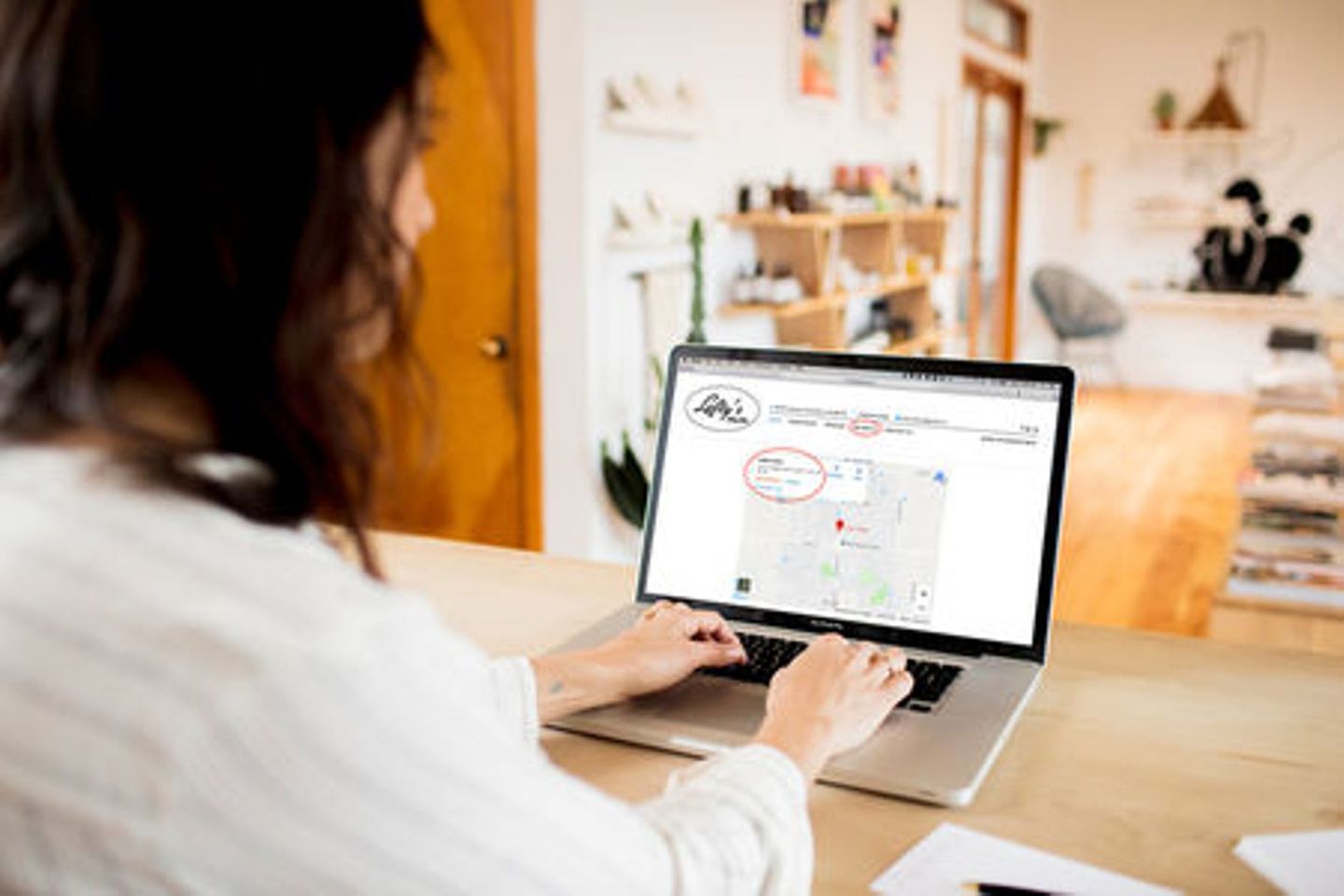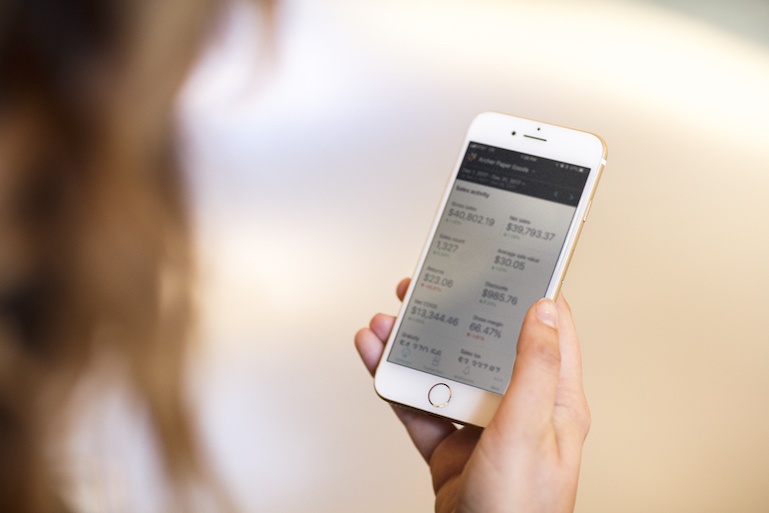
9 Ways to Unify your Digital and Retail Marketing Strategy
Did you know that up to 78% of shoppers will check you out online before heading to your retail store?
Whether they are looking for purchase ideas, narrowing down their options, or simply trying to locate your store, more and more people are opting to start their shopping experience online. Even when they plan on completing it in-person.
The average customer journey is becoming more complex, and more retailers are adopting multi-channel offerings as a response. But, the growing challenge we’re faced with is how to keep these separate channels all unified and consistent for the best shopping experience.
This post will walk you through nine ways to unify your digital and retail marketing strategy so that your customers have a smooth transition across channels. This will result in better customer experiences, more sales, and increased customer loyalty.
1. Simultaneously Market Online and In-Store
The first step in unifying your digital and retail marketing strategy is ensuring your marketing plan is fully integrated and aligned across all platforms. It’s critical that your online marketing offers/advertisements support your offline offerings. And vice versa.
Consumers have been reported to browse products on their mobile devices for the best price while already inside a brick-and-mortar store (known as “showrooming.”) But this presents another challenge: speed and integration.
If customers “showrooming” in your store have to wait more than a few seconds to load your page and find your information, they will bounce:
This means you need a fast site, as well as accurate and frequently updated info directly correlating to your store.
The first step is blazing fast site speed. If you are unsure how to do this, you have a few options:
- Increase your page speed by reducing page bloat
- Manually sync your offline and online inventory, pricing, etc.
- Try WordPress managed hosting with a host/server that takes care of speed for you and connects to a WordPress ecommerce plugin, like BigCommerce for WordPress. Then, you can sync inventory automatically as purchases and returns come through.
- Use a content delivery network (CDN) and leverage caching to speed up your site. If all else fails, there are plenty of WordPress tutorials to help you with site speed.
- Minify your HTML, CSS, and JavaScript, and use tools like ShortPixel to compress your images.
If your products and pricing are not consistent between your store and website, and your website isn’t loading the correct information fast from your hosting provider of choice, it could lead to confusion and unhappy customers.
No one wants to see an online advertisement for a product claiming it’s on sale for $19.99, only to see it listed for $24.99 in-store. Or for a website to tell them there’s a new product release, then travel to their nearest location and be told that the store isn’t carrying the product.
One way to combat this is by advertising online and driving that traffic to your local store or vendors. In fact, it’s common to run ads online that drive local store visits. Kisstixx used this technique to drive $1 million in sales. So yes, it’s greatly effective.
Brands that develop retail store marketing mirroring their online experience achieve greater customer satisfaction.
That is because multi-channel shoppers love using integrated touchpoints, such as smartphone apps to compare prices and download coupons and in-store digital tools such as interactive catalogs and price-checkers.
2. Allocate Your Budget Across Marketing Channels
When creating a unified marketing strategy, it’s natural to wonder how much of your total budget should be allocated to each channel.
The answer is not cut-and-dry, as it depends on your industry, brand maturity, marketing goals and customer journeys.
According to one study, the average business spends roughly 12% of their annual revenue on marketing and advertising, 75% of which is allocated to their website or online store.
However, when we isolate small businesses only, the stats are drastically different. In this case, the average total spend is only 1% of annual revenue.
And if we break it down by product category, the numbers change yet again. For example, high-end retailers, such as jewelry and couture fashion brands, spend 73% of their marketing budget on offline print advertising.
Categories such as travel, real estate, healthcare, and education also all depend on print advertising to maximize brand awareness and value.
Ultimately, your allocation strategy should be based on the following:
What is the maturity and awareness level of your brand?
If you’re a start-up or relatively unknown, you should be investing more heavily in building your online presence.
What are your sales funnel priorities?
Are you aiming to drive more traffic to your store and website, or are you focused on converting more of your current audience?
Where are your customers?
If your customers predominantly shop in-store, then a larger part of your budget should go to print advertising.
Once you’ve established your objectives, you can allocate your budget based on which channels are best suited for achieving your goals. Keep in mind that it’s important to have a healthy budget for your digital marketing, including good content marketing when you’re operating an ecommerce store.
Unfortunately, most people initially attempt to use low budget content services, but they simply don’t generate a return on investment (ROI).
3. Invest in the Right Tools
To establish a unified strategy, you will want to invest in software and marketing tools that work cohesively with both digital and physical channels.
One of the most important steps to creating a smooth shopping experience is integrating your back-end systems and infrastructure. This means you need software that will share data between your physical store and ecommerce platform and allow you to access all of the information in one consolidated location.
Some of the marketing aspects you will want to be integrated are:
- Sales data from your in-store point of sale (POS) system and your ecommerce content management system.
- Inventory
- Promotions, discounts, and other special offers
- Customer information, including profiles and past purchases.
- Phone systems and online VoIP providers
- Attribution data and customer journeys.
Ideally, this means investing in a single platform that extends across marketing, ecommerce, and service functions. You’ll also want to select a platform that supports mobile access. This will allow your in-store customer service reps to access and capture data while interacting with customers in-person.
4. Take Advantage of Local Marketing and SEO
88% of consumers who complete local business searches on their mobile device will either call or visit the business within 24 hours.
This means if you’re not showing up in local online searches, but your competition is, you’re basically handing them customers and sales.
Just as alarming, if your business does show up in local results, but the information is incorrect, you’re turning away customers. 80% of them lose trust in you when there’s incorrect info and 93% feel frustrated.
Chances are, at least once in the past you’ve checked out a store’s hours online to make sure it’s open before driving there. Now imagine arriving only to discover the online info was wrong and the place is closed. You can see why this doesn’t leave a good impression!
The crazy thing is that fewer than half of stores have claimed their local listings on Google. If you’re not in control of your listing it means you’re either relying on complete strangers to populate your business information and/or you’re fine with not showing up in search results.
Local SEO and local digital marketing are simple yet powerful ways to increase your in-store sales through online channels.
Condensing website content into a user-friendly knowledge base software can help you improve local search engine rankings and easily deliver content to users. It can also help you solve multi-channel problems by helping you provide accurate information online about your offline store(s). A prime example of knowledge base usage is Best Buy, consolidating both online and offline information.
5. Acquire Positive Online Reviews
Making sure you have positive reviews online is just as important for your retail marketing strategy as making sure your local business listing is managed.
Why?
Because 92% of shoppers read online reviews before making an in-store purchase. This means that when you have no reviews or primarily bad reviews you’re losing customers and sales.
While you can’t force your customers to give you positive reviews, here are six things you can do to encourage them:
- Offer different places to leave reviews, such as on your website, Yelp, your Google listing, your Facebook page, and the Better Business Bureau.
For example, if you run a single-location brick and mortar store, you should consider adding links to gather reviews right from your main navigation, review widgets, and map listings. This helped one local salon in Michigan quickly boost their number of reviews and visibility on Google and Facebook.

- Create an email marketing strategy. Collect customer email addresses at check-out and email a review request. Make sure the email provides links to where you want the review submitted.
- Offer incentives for reviews. Just make sure the incentive is tied to leaving a review and not to leaving a “great” review. If you only reward people who give you 5-stars your reviews will be meaningless.
- Set up automated review requests that are sent out after trigger events. For example, have a review request go to a customer as soon as they re-order a product or tag your brand or product in a social media post.
- Respond to reviews, especially the negative ones. This will result in better ratings overall.
- Share and promote positive reviews you’ve already received.
- Use chatbot surveys to collect customer feedback when people buy from you online.
6. Create a Branded Unboxing Experience
Whenever an item is being shipped directly to a customer’s home or to a local store for pick-up, you have an opportunity to create a memorable branded unboxing experience for your customer.
What is a branded unboxing experience?
It’s simply the customer’s experience of opening their package. This experience is impacted by the shipping and packaging materials, the presentation of the package, filler, and other materials inside the box.
Packaging inserts such as discount offers, product samples, small gifts, and personal thank you notes can increase customer loyalty and provide cross-selling opportunities.
Want to drive more business to your physical locations? You can start including in-store-only discount offers in your customer packages.
Branded boxes not only help make a unique impression, they’re also a great opportunity for raising brand awareness. Everyone who comes across that package on route to its final consumer will see your brand.
Creating a memorable branded unboxing experience can lead to more repeat buyers and more positive customer reviews.
7. Ecommerce That Syncs With Stores
One of the greatest challenges of multi-channel retailing is synchronizing your online and in-person stores.
While, the right tools can help with this, as discussed above, that’s not all there is to solving this problem. In the end, it’s not just the software that needs to be integrated, but the entire process.
Let’s paint a picture: It’s a freezing winter day, you just got finished a long shift and picked up the kids from school. You’re tired, they’re fighting, and the last thing you want is to haul them through a retail store. But there’s something you need now and it just won’t wait until tomorrow.
Thankfully, your favorite retailer has an online app that allows you to order and pay online, so all you have to do is pop into your closest location and pick it up in-store. You’re assuming this means it’ll be a quick 5 minutes in-and-out, where you get to skip the lines and avoid a public meltdown.
But then you arrive, only to discover that the order hasn’t been processed yet. Even though the app confirmed it would be ready. Uh oh.
Now, not only are you stuck in a customer service line, there’s delays and headaches while they find your order in the system, confirm you’ve actually already paid for it, and then go and get it ready for you. Suddenly a bad day just got 10x worse.
We never want our customer to be this person.
In order to avoid that happening, not only do your systems need to be integrated, your in-store processes need to support them. This means:
- Customers should receive confirmation that the product is available before ordering.
- Orders need to be processed efficiently, and rapid collection should be supported.
- Instructions on what the customer needs for pick-up, such as their order number or a piece of ID, should be clearly visible online and in-store.
- There should be a dedicated store area or customer service desk for in-store pickups, and clear signage pointing to its location.
SEE ALSO: How to Integrate Your POS System With A Website
8. Focus on Consistent Design and Brand Messaging
One of the decisions you will need to make for a cohesive marketing strategy is how you will keep your design and brand message consistent online and offline.
It’s important to stay consistent across all channels, including your product offerings, packaging, print, customer interfaces, user experiences, brand culture and values.
To do this, you’ll want to create a consistent design strategy that encompasses all marketing channels.
This strategy should include design guidelines such as which fonts, colors, logos and imagery to use for ads. For example, if you have brand colors on your website, these colors should also be incorporated into your store design, blog content, and print advertisements. These design elements can even be included in other advertising channels like podcasts and online courses.
Your strategy may also include voice and tone guidelines, which can help your messaging sound consistent, even when it’s created by different people.
Aspects of the business that should be covered by your design strategy are:
- Your online store
- Other online platforms
- Product packaging
- Employee uniforms
- Advertisements
- Content marketing
You can use an app such as Grammarly to keep your brand message and copy clear and consistent across digital platforms using its goals functionality.

9. Monitor Your ROI
Your ROI (return on investment) is a great metric for understanding whether your marketing strategy is paying off or not. To make use of this metric, first you need to understand how to calculate it. Then you need to know what is considered a good ROI.
Calculating Your ROI
The calculation is fairly simple: (Sales Growth – Marketing Cost) / Marketing Cost = ROI.
The challenge is in identifying how much of your change in sales can be attributed to your marketing efforts.
For example, let’s say you spent $1,000 on advertising this month and sales went up by $5,000 compared to last month. Is your ROI really 400%?
- Probably not. Many things could have contributed to the increase:
- A consumer holiday
- Your competitor increasing prices
- An improvement in the economy
- A delayed effect from last month’s advertising
- Other marketing or positive publicity (such as positive press release)
In an attempt to account for these outside factors, the calculation can be adapted to the following:
(Sales Growth – Average Organic Sales Growth – Marketing Cost) / Marketing Cost = ROI
Using this method, you first need to use trends, historical data, and other analysis to predict what you would expect your sales to have grown by without any marketing costs. Then you remove that amount from the equation to arrive at a more realistic ROI.
But, if you’re a new entrepreneur or going through significant change it can be difficult to predict the average organic growth.
If your goal is increasing awareness you may be investing money into marketing that’s not going to pay off until sometime down the road. This further complicates your analysis, since the spend is occurring now but the increase in sales could be months away and only gradually occur over time.
The bottom line is that ROI doesn’t currently do a good job capturing long-term results, including impacts on customer retention, loyalty, and lifetime value.
But, the good news is, thanks to technological advancements, it is getting better for digital marketing.
As attribution models and the ability to track ecommerce sales with analytics tools improves, we gain more insights into the entire customer journey, which allows us to start tracking long-term responses to digital campaigns and ads.
Companies such as AdStage focus on providing software that will help us calculate more accurate ROIs.
What is a Good ROI?
Let’s say nothing else happened, and you’re confident the entire increase in sales is due to your advertising efforts. The next question is: is a 400% ROI good?
It definitely sounds good, right? You’re making more than you’re spending. But, according to one expert, your goal should be at least 500%.
“A 5:1 ratio is middle of the bell curve. A ratio over 5:1 is considered strong for most businesses, and a 10:1 ratio is exceptional.” – Chris Leone, President, WebStrategies
Why?
The reason is that your metric (ROI) doesn’t cover all of the costs that go along with an increase in sales.
Going back to the previous example, your $1000 spend resulted in an extra $5000 in sales, but that’s $5,000 gross revenue, not profit.
In order to make that money, you needed to sell more products, which means higher costs of goods sold (COGS). You also may have had to employ more people and hire more sales reps to handle the extra demand, so there are increased labor costs. And more sales leads to an increase in other costs such as taxes.
Once you take all of that into account, your actual profit is likely much less than $4,000 (sales – marketing cost). You may even realize you lost money! Which is why, as a general rule of thumb, a higher ROI is recommended.
Also, as a final note, unless you’re only investing in marketing one channel at a time, make sure you look at your segmented ROI, not just the overall number.
For example, you may have spent $500 in print advertising and $500 on Facebook Ads. Let’s say the print ads resulted in a $1,500 increase in sales and the Facebook Ads resulted in the other $3,500. Overall, you’ve underperformed, but when viewed separately it’s easy to see the Facebook Ads were actually worthwhile.
Some Final Multi-Channel Marketing Tips
While we’ve covered 9 ways to unify your digital and retail marketing, here are some final tips on implementing a multi-channel strategy.
- Define your strategy, goals, and focus for each channel.
- Integrate your customer data into a central location and make it available to everyone who needs it (marketing, advertising, customer service, etc.)
- Leverage advanced systems and technologies such as machine learning and artificial intelligence.
- Embrace successful online lead generation tactics that will help bring customers to both your digital and physical stores.
- Offer personalized content across channels.
- Monitor each channel’s performance and adapt as necessary.
Key Takeaways
The key to successful unification of digital and retail strategies is integration.
To achieve seamless integration, focus on implementing the tools and processes required for providing a consistent and reliable customer experience across channels and platforms. Also, make sure that you synchronize your online and in-store marketing and product offers.
You should also embrace simple yet powerful digital strategies such as Local SEO and online reviews to maximize in-store sales, and provide a consistent brand design and image across all channels.
If you offer in-store pick up, make sure the process is fast and seamless for your customers. And don’t forget to customize your packaging for a uniquely branded unboxing experience.
Finally, make sure you wisely allocate your marketing budget and that you monitor your return on investment to make sure your strategies are paying off.
Want to try ShopKeep for yourself?
Just answer a few easy questions.
Need help finding the right point of sale?
Just complete the form. We’ll call you right back to explain how ShopKeep can work for you.
Hit the ground running.Sprinting, in fact!
Read our free, comprehensive guide, Small Business 101, to learn all you need to know about starting a thriving business.

